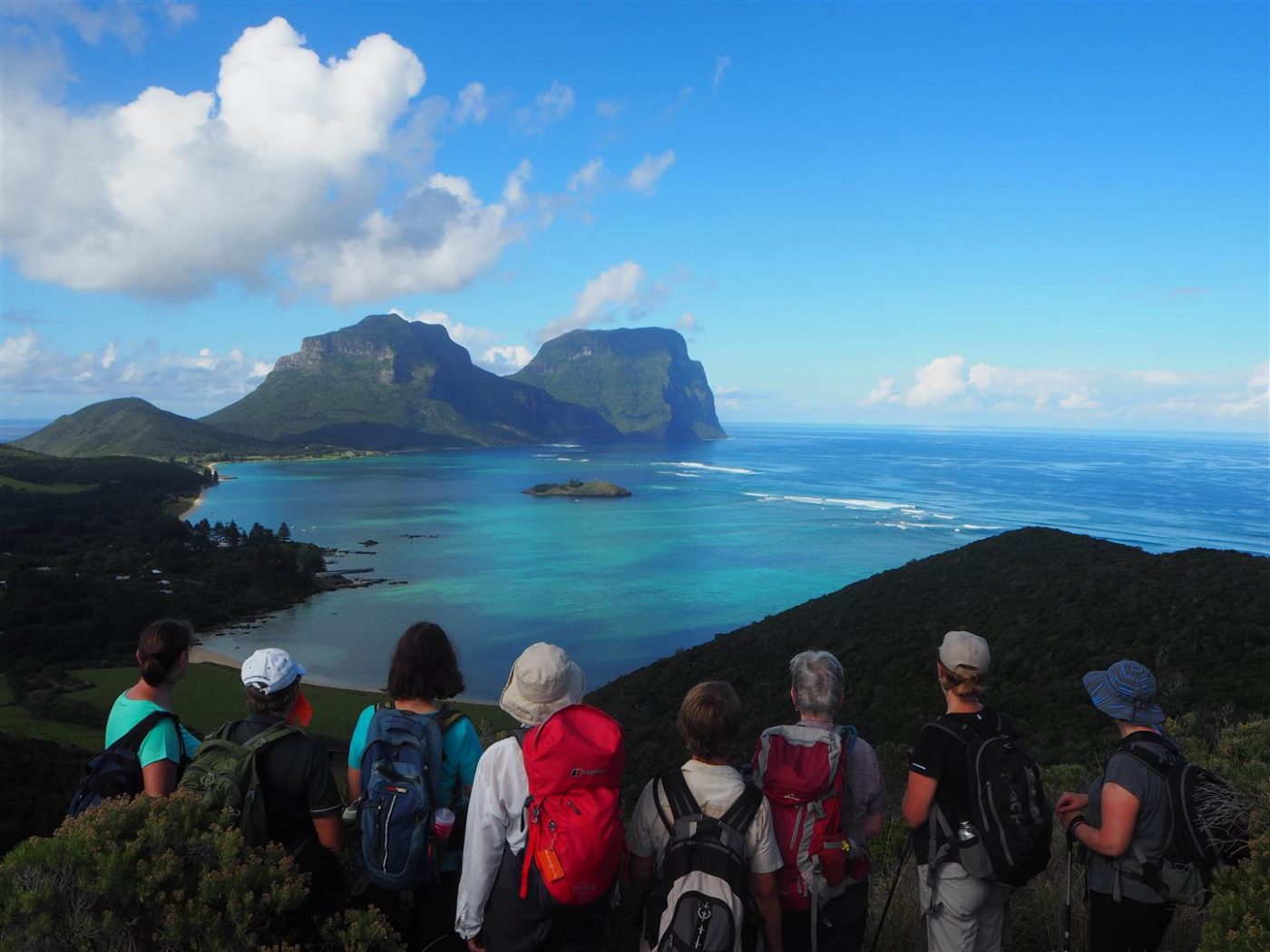
10 REASONS WHY WALKING IN NATURE HAS BECOME MORE POPULAR
Walking or hiking popularity is indisputably on the rise. The following is our perspective on why this is so.
- There’s a movement toward wanting to have experiences rather than consuming or accumulating.
Human beings are strange creatures. Over the last millennia or so, possibly longer, we have been sadly waltzed (in a Leonard Cohen Last Waltz slow dance on your way to oblivion kind of way ) into thinking that accumulation will somehow fend off the inevitable. Sadly, the travel industry is not exempt from the consumption-orientated mindset; there’s always been a rather large segment that has travelled to accumulate, to tick off tourist sites or destinations as if they were like something available for ownership. Epitomised by the on and off bus tours where the guests get shunted from one destination to another marking off each location as they go. These types of holidays are in decline in real terms and yoga retreats, cooking or gourmet food-based, diving, sailing, among other things plus and more to the point, walking holidays are all on the rise.
Going for a walk or hike provides the platform for a more immersive experience, to walk the road less travelled. This is particularly so when undertaking a long walk, as in a multi-day walk, in being a means to which to explore landscapes, that are only accessible to those that are willing to tackle a greater physical and mental challenge.

Taking a break in the Snowys Mountains
- There is a move toward disconnecting from the matrix and being more present.
It’s easy to get lost in your thoughts for hours whilst watching TV, or mind you padding along a track. Especially so if you have a big imagination or a predication for being preoccupied. It can be enjoyable allowing the mind to wander, to escape into your thoughts from a creative perspective. But for the most part, this type of ‘thinking’ does very little to improve brain function, wellbeing or give rise to any useful action or change. On the contrary, excessive rumination can be extraordinarily counter-productive.
From what modern-day neuroscience apprises us, mulling over what bothers us most is counterproductive, in that it serves to carve out an even wider and deeper channel through our very malleable brain. Effectively enabling those negative thoughts to find their way with ease and strengthening the very negative connections and wiring we seek to purge. What you could, should or might of said or done is not the issue, it’s the thinking about it, that’s the problem. This is old knowledge, an integral precept of the positive psychology movement, that is being promulgated as more and more people choose to engage in the mindfulness that walking provides.
Walking clears the mind if we practice being alert to our mind’s propensity to wander. Being present whilst walking is one of the most useful lessons or skills you can learn to improve your situation as it helps to positively develop brain function. This scientifically proven concept confers that as you build momentum by practising mindfulness it has a corollary effect of strengthening the prefrontal cortex. This is the part of the brain that’s largely responsible for the good things like managing our emotions, focusing, compassion and rational thought.
The key, of course, is in practice. To draw your attention back to the present and focus on a never-ending life-long commitment as it turns out. But as more people take up the challenge of being mindful the more we find people wanting to escape the rat race and walk. Incidentally, there is a 2500 history of Thai Buddhist monks walking in mediation, called Vipassana, so again it is nothing new.
Staying present even for a limited time when walking or when you stop at a lookout, without being lost in thought makes the walk and the experience that much more memorable, because of the nature of being there fully and not somewhere else lost in thought. Walking is one of the fastest ways to centre yourself and it is the growing awareness of this that is increasing the popularity of walking.
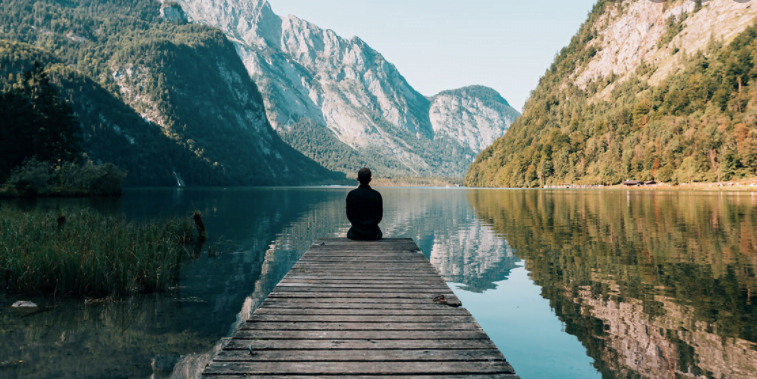
- We rediscovered the obvious: Walking is like eating, drinking, and sex; we have a natural appetite for it that we have to satisfy.
We are compelled to walk, without it we quickly become a big bag of festering grumpy bum, that is. Sorry I digress.
For the last couple of hundred thousand years or so we have always wandered, up to about 18 km a day. However, we have become sedentary as a species, more so in the west and antithetical to our true natural state rather than that of being natural wanderers. It is this lack of exercise that has led to obesity rates and diabetes becoming a massive issue (exacerbated by poor dietary choices). The problem of being sedentary is spreading fast. India has the fastest-growing incidence of obesity-related diseases, due to the burgeoning growth of the middle-class and the related lack of incidental exercise that wealth brings (and poor dietary choices once again).
There is a strong correlation between walking and good health outcomes. In one mega study on walking, they found that this activity particularly reduces blood pressure, the likelihood of cancer and boosts your immune system and a whole plethora of other benefits that will elongate your lifespan. We don’t need a mega study to know that walking is an integral part of living, without a certain amount each week we suffer tremendously. Fortunately, the move back to walking is on the rise due to awareness of the simple fact that without it one can expect poorer health.

Part of the joy of walking on the Kumano Kodo is the food
- Nature specific walks have a greater benefit
There is good scientific evidence now that walking in nature as opposed to the city has a far greater positive effect on our brains, particularly the prefrontal cortex once again. It is clear that walking makes you feel much better and walking in nature even more so. The evidence is overwhelming and if you want to read more about have a look at this article on the benefits of walking in nature.
The accessibility of nature walks in countries such as Australia and the excellent work the National Parks organisations have done in laying out and maintaining tracks need to be acknowledged. This increased access means now more people can walk and appreciate remote natural landscapes but don’t have to give up first-world comfort to do so. Not everyone likes the idea of soggy lentils and sleeping in a tent.
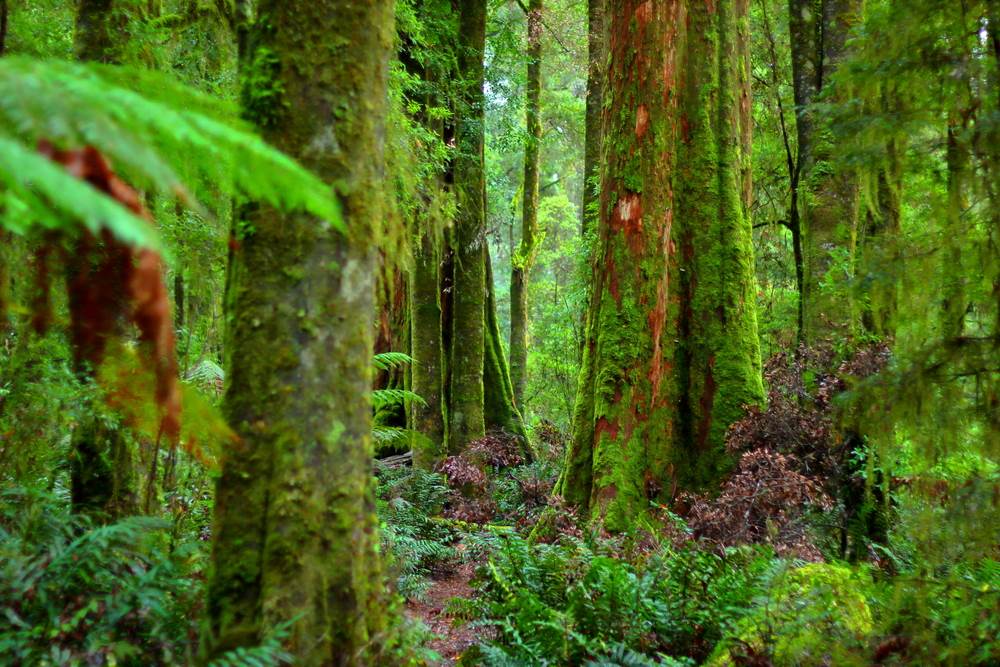
Nature promotes good brain function
- Walking and JOMO (the joy of missing out)
There is a real movement toward the disentanglement from life’s complications and the pandemonium that makes the first world so stressful. Walking remote wilderness destinations is just one of the known ingredients to being more grounded. The constant noise of the 21st century, whether it is visual or audible has become toxic. We’re presently exposed to somewhere between 4000 to 10000 adds a day. When you bolt on the demands of social media and unrealistic life expectations that are being pimped online by social companies, what you get is an increase in anxiety and depression levels across the community; particularly in the younger generation. The fear that you’re somehow missing out is a deliberately manufactured byproduct of the messaging as it drives revenue. Why it is legal you can only guess?
Walking for those whose lives are busy and crowded out of the city is fast becoming one of the go-to outs that people are using to destress. Leaving the phone behind (or safely tucked away) is part of the process of digital detoxing and beginning the journey toward the joy of missing out. It’s the ‘absence of’ when walking in nature that quietens the mind and creates room for expansion.
- Walking is one of the world’s great levellers
If the last 2 years has taught us anything, it’s that no matter what our station in life we all face the same challenges. There’s been plenty of time to come to face with the 4.5 billion-year-old planet we inhabit and the 13.8 billion-year-old universe with no apparent end to it. If that is not enough for you there’s the theory that we might be living in just one of infinite universes. Anyway, I’m sure you get the picture. You don’t have to think too hard to work out our importance relative to time and the universe. Walking at locations like Ubirr in Kakadu, with billion-plus years of history stretched out in plain sight makes brings this into perspective.
Ultimately we really don’t matter, other than to our loved ones and friends and select people that may rely on us. And with that reality, there’s real clarity on what does matter, and the subsequent simplifying of life makes living much more enjoyable.
The last point on walking being a leveller is the bleeding obvious, but worth mentioning that there is no barrier to entry regardless of your socio-economic, religious persuasion or any other way you choose to dissect the world. Everyone is welcome to it.
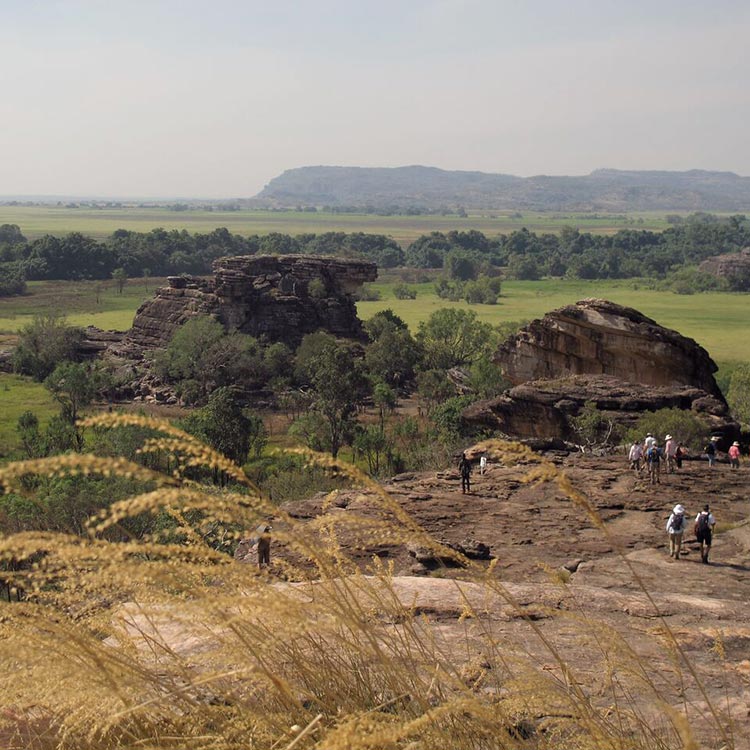
The time we spend on the planet relative to 2.5 billion years of history at Ubbir in Kakadu (The rocks that is) is insignificant.
- Slow Travel
Slow travel is somewhat self-explanatory. It’s all about taking your time and relieving pressure on yourself to rush. It’s all about journeying at a leisurely pace, exploring more thoroughly with no end goal in mind. If you have read James Clear’s book Atomic Habits, you will know that goal setting can be futile in many instances if you haven’t focused on the daily process or habits to get to the goal. The process matters more than the goal. This is not much of a revelation if you consider the Buddhist or Taoist body of knowledge. The ultimate reason for all this slowness is to facilitate a deeper connection with culture, the landscape, or wherever it is youré slow travelling to, or perhaps ‘through’, might be a better way of describing it.
For anyone, however, who appreciates going for a walk or going for a hike, slow travel is hardly a revelation. And while everybody has their own reasons to walk, we’re pretty sure connection to place, and maybe, self is becoming more important by the day. If you want to read more on Slow Travel we’ve written a whole article on slow travel.
The Camino, the world’s most popular slow travel multi day walk
- Away from the crowds
Learning to be alone is one of the greatest gifts we can give ourselves. Contrary to popular culture it isn’t about negating humanity, and contrary in any way to seeking connection, but more about learning not to need connection, which in some instances, like in codependency, can be harmful. In fact, aloneness once realised, enables one to connect on a much more authentic level with no unconscious agenda (or conscious for that matter) playing out in the background. The key difference between being lonely and being alone is the concept of emotional attachment. Being positively attached to significant others allows people the freedom to explore, negative attachment is the corollary.
Walking away from the crowds is the perfect platform to practice and enjoy being alone. Either way, it can be an extremely positive experience and undoubtedly there are many more people seeking out this experience, using walking as the platform to enjoy connecting with themselves and serenity.
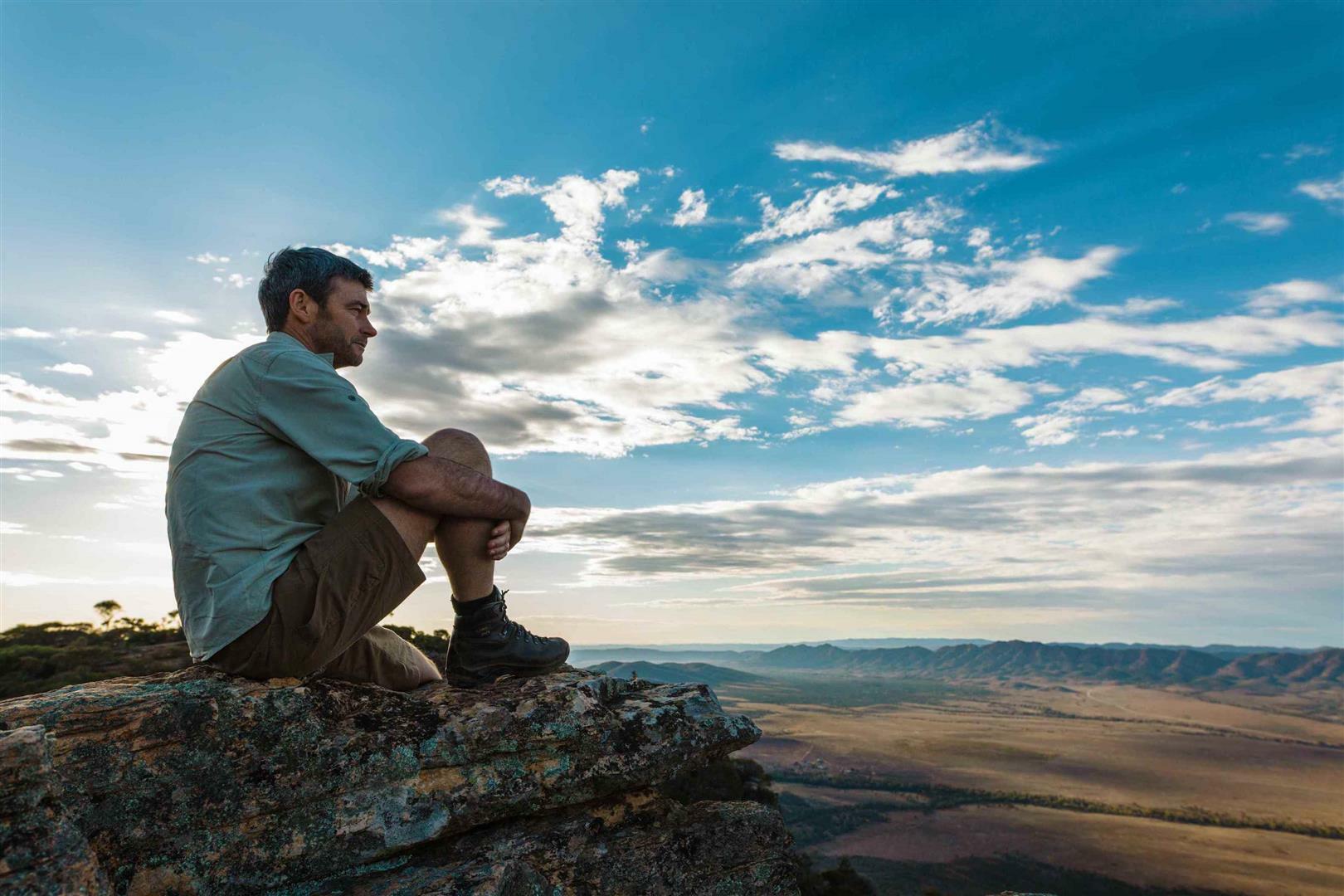
Walker at Rawnsley Bluff lookout enjoying the solitude
- Connection with other people
Contrary to the point made above is that people are now more actively seeking out the experience of walking with just a few of their closest friends or family. Fundamentally, as with everything it is all about balance. There isn’t much need to bang on about what family and friendship mean but we do know it is one of the huge drivers in walking becoming more popular. Families that walk together stay together. The amounts of families and friends taking off to do multi-day walks, or walking holidays is increasing significantly.
There’s also the new concept of walking to meet and connect with new people. Real evidence of this is in the enormous growth in the number of walking groups that have sprung up over the last 10 years or so.
Then there is the Camino de Santiago a case in point; the pilgrim walk in Spain (France and Portugal as well), which is a walk that is more than just being about the landscape and the physical walking. The Camino has become one of those must-do experiences for all kinds of people, walkers and non-walkers alike. The walking itself is passable, in some places so mind-numbingly repetitive that you have to admit that, especially if you are a walker, there’s no way you would have even considered walking some of the sections if it weren’t the Camino! The walking quality of the Camino simply said has nothing on the Himalayas or Mont Blanc or hundreds of other amazing locations. It’s not the amazing views or the stunning scenery that gets people in, it’s the concept that you’re experiencing and participating in this vast moving festival of what’s good about humankind. That the ultimate goal is connection and seeking more of it. The physical walking from one town to another, that’s occurring daily across the breadth of Spain on the way to Santiago is just the conduit for the connection experience.
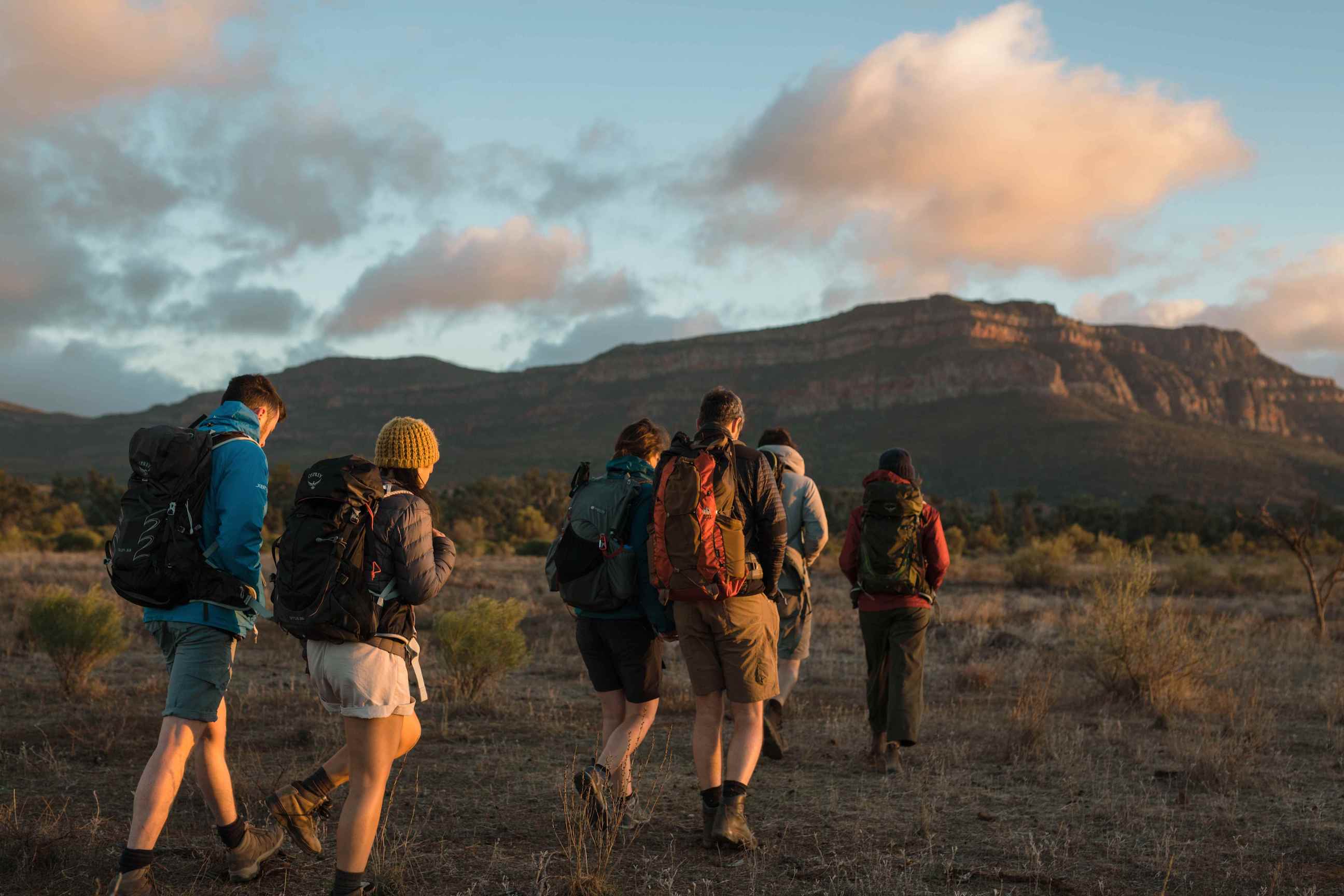
3’s a crowd, six is more fun
- Newness and the unpredictability of walking in nature
As you tread around the block for the 1000th time, as many of us have done this last few years, give thought to how the predictability of a walk can affect your mindset. The local stroll no doubt has become a habit and there’s nothing fresh about an experience that can be done on autopilot, that lacks learning or growth.
Alternatively, an example of walking like on the Larapinta Trail involves a high-level concentration as the track for reasons such as, it is often uneven, loose underfoot, rocky and contrarily well-formed, and flat in some parts. Such unpredictability in concert with the superb views and unique landscape matched with the newness to the experience that makes this walk the wonderful experience that it is.
It is the newness and the sense of wonder that make a long walk or hike even more worthwhile. Arriving at a pristine beach without a soul in sight, managing to summit a mountain, or dipping your feet in a secluded stream are all experiences that feed the soul. The rare siting of echidnas or a wedge tail eagle hunting in flight are those delight moments that can only be experienced by walking, particularly in the remote wilderness and various other natural locations. Then there are also those fascinating legless creatures, namely snakes, if a snake sighting doesn’t wake you up nothing will.

The Larapinta and the red centre
If you have any other thoughts please don’t hesitate to drop us a line we are always interested in why people walk.
Have fun hiking.


There are no comments, be the first to comment.